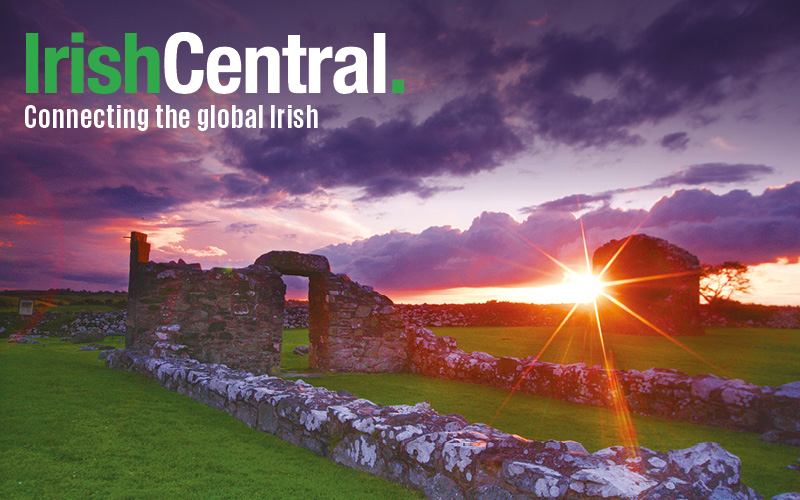Posted by FatherTIm at 3/14/2009 3:04 PM EDT
God bless you all!
I'm so happy to have the opportunity to reach out to all people of faith (or no faith), and belief (or no belief) - but especially to my Irish and Irish-Catholic friends - with this new blog from IrishCentral.com.
I hope all who wish, or need, a friend to share their thoughts and concerns with, will post comments on this blog. All will be answered with my words as time permits - but all will be answered in my prayers. Indeed, our Father answers all our prayers, all the time.
Of course, it seems appropriate today to say a bit about Ireland's beloved patron saint - whom millions around the world will celebrate and pray to on this special day. I know from the testimony of many faithful that St. Patrick, like all the Blessed, hears our prayers and ansqwers them as swiftly as they are asked. Do we always decide to hear him? Perhaps this excellent and accurate story of St. Patrick's life, which I was surprised to find on The History Channel, will help us find an answer.
St. Patrick is one of Christianity's most widely known figures. But for all his celebrity, his life remains somewhat of a mystery. Many of the stories traditionally associated with St. Patrick, including the famous account of his banishing all the snakes from Ireland, are false, the products of hundreds of years of exaggerated storytelling.
It is known that St. Patrick was born in Britain to wealthy parents near the end of the fourth century. He is believed to have died on March 17, around 460 A.D. Although his father was a Christian deacon, it has been suggested that he probably took on the role because of tax incentives and there is no evidence that Patrick came from a particularly religious family.
At the age of sixteen, Patrick was taken prisoner by a group of Irish raiders who were attacking his family's estate. They transported him to Ireland where he spent six years in captivity. During this time, he worked as a shepherd, outdoors and away from people. Lonely and afraid, he turned to his religion for solace, becoming a devout Christian. It is also believed that Patrick first began to dream of converting the Irish people to Christianity during his captivity.
After more than six years as a prisoner, Patrick escaped. According to his writing, a voice - which he believed to be God's - spoke to him in a dream, telling him it was time to leave Ireland.
To do so, Patrick walked nearly 200 miles from County Mayo, where it is believed he was held, to the Irish coast. After escaping to Britain, Patrick reported that he experienced a second revelation - an angel in a dream tells him to return to Ireland as a missionary. Soon after, Patrick began religious training, a course of study that lasted more than fifteen years. After his ordination as a priest, he was sent to Ireland with a dual mission - to minister to Christians already living in Ireland and to begin to convert the Irish.
Familiar with the Irish language and culture, Patrick chose to incorporate traditional ritual into his lessons of Christianity instead of attempting to eradicate native Irish beliefs. For instance, he used bonfires to celebrate Easter since the Irish were used to honoring their gods with fire.
He also superimposed a sun, a powerful Irish symbol, onto the Christian cross to create what is now called a Celtic cross, so that veneration of the symbol would seem more natural to the Irish. Although there were a small number of Christians on the island when Patrick arrived, most Irish practiced a nature-based pagan religion. The Irish culture centered around a rich tradition of oral legend and myth. When this is considered, it is no surprise that the story of Patrick's life became exaggerated over the centuries - spinning exciting tales to remember history has always been a part of the Irish way of life.
St. Patrick's Day is celebrated on March 17, his religious feast day and the anniversary of his death in the fifth century. The Irish have observed this day as a religious holiday for over a thousand years.
On St. Patrick's Day, which falls during the Christian season of Lent, Irish families would traditionally attend church in the morning and celebrate in the afternoon. Lenten prohibitions against the consumption of meat were waived and people would dance, drink, and feast - n the traditional meal of Irish bacon and cabbage.
The first St. Patrick's Day parade took place not in Ireland, but in the United States. Irish soldiers serving in the English military marched through New York City on March 17, 1762. Along with their music, the parade helped the soldiers to reconnect with their Irish roots, as well as fellow Irishmen serving in the English army.
Over the next 35 years, Irish patriotism among American immigrants flourished, prompting the rise of so-called "Irish Aid" societies, like the Friendly Sons of Saint Patrick and the Hibernian Society. Each group would hold annual parades featuring bagpipes and drums.
In 1848, several New York Irish aid societies decided to unite their parades to form one New York City St. Patrick's Day Parade. Today, that parade is the world 's oldest civilian parade and the largest in the United States.
I believe the best way we can honor St. Patrick today is to do as he did: listen to the Voice of our Lord and God, and follow Him. God's Voice speaks to us all the time - but in the din of our daily, often self-involved lives, to say nothing of big parades! - we rarely hear His Words.
Tonight, when you go to bed after your parties and parades, close your eyes and think of God. Say His Name slowly and repeatedly - it will surely relax you and put your mind at peace, and thus, closer to His. Remember His Love for you, which is changeless and unchangeable.
You will sleep well in His loving Arms.




Comments